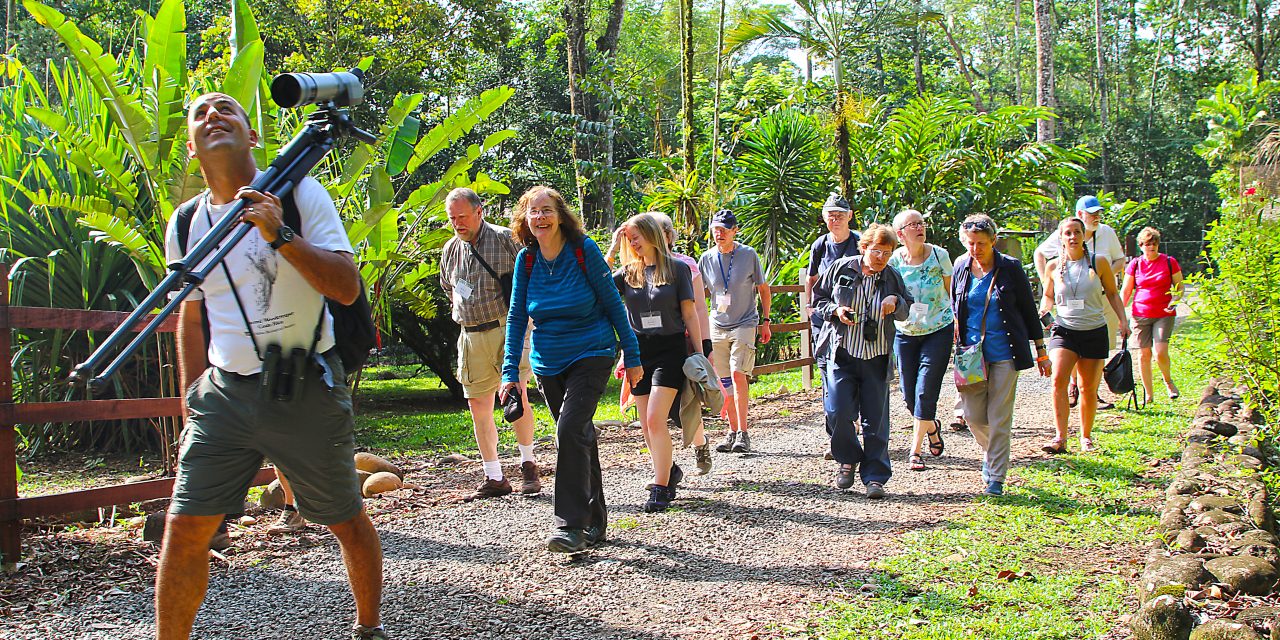A travel club is an organization that plans group trips to various destinations around the world. Here’s why you should start your own and how to get started!
A successful travel club comes as a result of a carefully orchestrated plan of-attack. The sales and marketing process is often feared, resented and avoided by just about everybody at one time or another. But it doesn’t have to be difficult, nor beyond the budgetary constraints of most folks. It does, however, demand a certain level of know-how and a modest degree of discipline. Selling, above all, demands consistency and has little room for half-hearted attempts.
In this three-part series we will layout everything you need to know about starting and marketing your own travel club. If this concept interests you further, there is an entire book dedicated to the subject called Traveling Tribes.
- Part 1 will discuss the steps for implementing a successful travel club sales campaign.
- Part 2 will address the four myths that prevent most sales & marketing professionals from becoming more successful.
- Part 3 will highlight 11 Sales & Marketing Mistakes that need to be recognized and avoided at all costs.
Part 1: Why Group Travel Clubs Make Sense
- Organizations are seeking new ways to connect with members, subscribers, customers or their communities
- More people are traveling but want to avoid the hassles associated with planning your own trip
- It’s more difficult than ever for consumers to make smart travel decisions with the proliferation of choices available
- Travel in a group environment is an enjoyable, shared experience that builds bonds between you and your fellow travelers
- Travel can satisfy an educational or organizational mission
Now that you have a better understanding of why travel clubs are important, you need to determine if the development of a travel club will broaden your appeal within desirable demographic. If you’re looking for new ways to create fun activities and help people become more active this might be worth a shot. If you’re looking for a new source of income, group travel trips can raise tens of thousands of dollars per year for your organization. If you are looking to travel for free, or at extremely discounted prices you can, thanks to generous group leader benefits.
What Types of Organizations Create Group Travel Clubs?
It’s safe to say that nearly all types of organizations can benefit from a travel club. Here are 10 top markets that have successfully implemented travel club concepts:
- Churches
- Banks
- Restaurants & Bars
- Associations
- Charities
- Specialty sports retailers
- Theaters and Cultural Institutions
- Chambers
- Hospitals
- Colleges, universities and other learning institutions
Taking the Next Step…Implementing a Successful Travel Club Sales Campaign
Step 1. Establish Your “USP”
This is your UNIQUE SELLING PROPOSITION. It addresses the question, “Why Should I Travel With Your Organization?” If you don’t know why I should hook my wagon to your horse, why should I take the time to figure it out?
“You are the most honest… hard working … brightest …cheapest… most savvy….most knowledgeable…..most fun….most creative……you know the right people … and you were born under the right sign”. Stay away from these textbook, dime-a-dozen responses. Winging glib replies to potentially interested travelers won’t get many people interested in you or your travel program.
Why would anyone in their right mind choose to sign-up for one of your trips is what you need to think about on an ongoing basis? Why you? Finding the answer to this question is going to be harder than it first appears. But the answer will be twice as important as you ever imagined.
Start by thinking about the likes and dislikes of your existing customers. Take a minute and jot down the thoughts that pop into your head in response to these seven questions below. Trust me. This time will be a very good start as you begin to fine-tune your marketing approach by design.
- What travel-related problems are they concerned with?
- Are you in position to make their lives more interesting, exciting and enjoyable?
- How will you save your customers time, money… and effort?
- How can you help them minimize bad travel related choices?
- How will you minimize their frustrations?
- Will you provide them an easier way to experience the world?
- How can you help educate them so that they can make more effective travel- related decisions in the future?
Step 2. Define Your Territory
Avoid chasing rainbows. Is it a coincidence that today’s professional athlete earns a tremendous amount of money working within a defined, bordered, clearly marked playing field? Their athletic abilities can be focused within a specific area of play. They know exactly where they need to be at all times. Is it a coincidence that today’s major corporations hire national sales managers…regional managers… territory managers… and product managers? Top-level management also knows that their finest sales people can’t be all places at all times. They make their living between clearly drawn boundaries. This is the way winners do it. This is the way winners win.
In order to compete effectively today, regardless of the industry or specific product or service, you must place yourself in an imaginary arena where you too can focus on specific objectives, goals and potential clients. Failure to narrow your “market” to a definable area will do nothing but confuse your thinking and introduce a “gray area” thereby diluting your sales effort.
It is virtually impossible to be all things to all people. But it is easy to satisfy the needs and wants of a specifically targeted group – which falls within a specifically defined territory, which has a specifically defined need, or problem. A territory is a defined location that you can envision … and understand… and develop a reputation in. Of course you will expand your territory in time, but begin by making it small enough to work for you. For the sake of this report, your territory can involve geographic boundaries or it can consist of a defined demographic profile of customer.
Step 3. A Strategy For Launching Your Travel Club
The next step is to decide how you are going to approach the candidates, or prospects for your travel club. Rather than to quickly read through this information, let’s take a minute to record your initial thoughts for each question below:
- How are you going to introduce yourself?
- Can you improve the comfort level?
- How will you improve your awareness level?
- How are you going to communicate with them?
- How can you going to create an environment where they will warmly invite you in and give you their attention while listening to what you have to say?
Narrowing the many marketing possibilities down to the few that make the most sense to you … to your personality… to your budget … and to your time frame becomes a very important decision.
The options include direct mail, e-newsletters, cold calling, social media, press releases, seminars, trade shows, networking, referral chains, writing articles, and public speaking.
It is immaterial which strategy you decide to use. When administered properly, all marketing gambits have been proven to work. But regardless of your final decision, you must commit to a consistent approach.
Making the list is simple. You must now decide how often you are going to utilize these tactics. This of course will be determined by many personal factors. Not the least being your budget. An acceptable guideline: Be prepared to contact each of your prospects a minimum of seven (7) times in each eighteen (18) month period. You should feel comfortable investing the time and effort to contact each prospect a minimum of 7 times.
Step 4. Develop a Traveler Profile
This will save you many hours of needless frustration and “wheel-spinning”. Not every prospect will bring joy to your club. In fact, many travelers have a propensity to create tension, stress and unnecessary aggravation. It is my belief that these particular prospects do not contribute to your overall club mission statement. Don’t voluntarily invite negative influences into your world. There are plenty of people who will appreciate the benefits of a well-run trip. Your job is to find them. But it will be extremely difficult to find them if you don’t know who you are looking for. i.e. the profile. This is a list of traits and qualities that you are attracted to. Call it your wish list. Of course you may need to work with a few people or couples who do not meet your requirements, but you will do so with your eyes open.
What are some of the criteria that you might decide to list? Location. Hobbies. Age. Interests. Income Level. Past travel experience. Group activity. Size of travel budget. Pleasant attitude. You know what qualities you admire in people. Be on the lookout for people who exhibit these traits. And since people hang out with people like themselves, you can start working down the “friend-chain.”
Once you know what kind of member you are looking for, finding them will become much easier and your prospect/client database will grow much faster.
Step 5. Create a Prospect List
Many club organizers confuse a prospect list with a suspect list. Just about every person, in the beginning stages, looks like a “suspect”. In most cases, if the person can fog a mirror, they qualify as a “suspect”. All “suspects” however, do not have the time or the money to leave town. Therefore, not all suspects make good prospects. Your job is to isolate and identify without doubt, the true prospects: those with time, money and itchy feet.
The easy way to do this is to list people who fall within your designated territory (see step 2.) Then take each suspect and gauge them by how they stack up to your profile (see step 4). Due to your time constraints, focus your attention on those who you feel will produce favorable results required to keep your group active. Begin by making an attractive list of qualified prospects.
Step 6. Write A Script
It is all too common for club organizers to feel that their gift to the organization is their “gift for gab”. They take great pride in having the ability to “wing it” through difficult situations. My advice – take the time to write down the words you feel comfortable with when meeting someone for the first time. Then write a back-up sentence. And a third. Then a fourth. You will soon develop a script to center your discussions around. Chances are you will drift away from the script as your confidence builds. This is only natural. But until then, you should know exactly what information you want to convey.
Actors wouldn’t think of taking the stage without learning their lines. Comedians rehearse “bits.” Sports teams practice set plays. The real professional can ad-lib when he/she has to without the audience becoming aware of the change in pace. BUT, it all starts with the written word. Write a script, and then write answers to every question you encounter that makes you feel uncomfortable.
These six steps will get you off and running in the right direction. They are basic… yet vitally important for the success of your project. If you take the time to do some planning before plunging into building your group’s activities, you will become one of the more successful entrepreneurs in this part of the industry.
Continue to Start Your Own Travel Club – Part 2: The Four Myths of Selling








